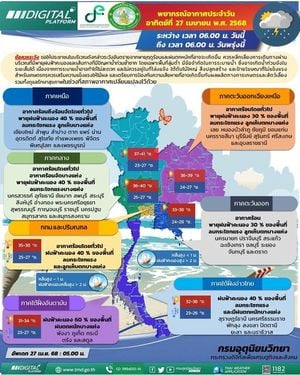Marriage Rates Surge in South Korea, Offering Hope for Aging Nation
SEOUL, March 20, 2025 – In a remarkable turn of events, marriage rates in South Korea have seen a sharp increase, raising optimism for a country grappling with an aging population. Recent data from the national statistics office indicates that in 2024, more than 222,000 couples tied the knot, which marks a 14.8% rise compared to the previous year. This surge is the largest recorded since 1990, highlighting a significant shift after years of declining marriage figures.
According to the data released on Thursday, this increase in marriages comes shortly after South Korea reported its first rise in birth rates in nine years. In 2024, the birth rate in the country experienced a slight uptick, a signal of hope amid economic pessimism that has been prevalent.
The increase in marriage and birth rates can be attributed to multiple factors, including demographic trends. Many of the new marriages involve couples born in the early 1990s, a period during which South Korea saw higher birth rates. Additionally, individuals and couples who postponed their weddings during the COVID-19 pandemic are now entering into marriage in greater numbers.
Government initiatives over the years aimed at increasing marriage rates appear to have taken effect as well. Support schemes, including increased parental leave benefits and reduced mortgage rates for families with newborns, are encouraging more couples to marry and start families. Moreover, the authorities in Seoul are considering providing financial assistance to residents wishing to reverse sterilization procedures such as vasectomies or tubectomies.
The marriage growth reflects a broader need to address the low birth rate crisis that has become a pressing issue for South Korea. The country's demographic challenges are underscored by concerns over the fiscal burden posed by public pensions and healthcare for an aging population.
Notably, the statistics also reveal a continued increase in multicultural marriages, with 20,800 international unions forming in 2024, which represents a 5.3% rise from the previous year. Multicultural marriages made up approximately 9.3% of total marriages, slightly down from 10.2% in 2023. Among foreign brides, Vietnamese women comprised the largest group at 32.1%, followed by Chinese women at 16.7% and Thai women at 13.7%. Among foreign husbands, American men were most prevalent at 28.8%, followed by Chinese men and Vietnamese men.
Noteworthy is the fact that the divorce rate continues to decline, with a 1.3% reduction from the previous year, resulting in 91,200 divorces in 2024. Similarly, divorces among international couples have also dropped, witnessing a decline of 1.4% to a total of 6,000.
This harmonious combination of increased marriage and stable or declining divorce rates contributes to the optimistic narrative for South Korea, which has long been concerned about its birth rate being among the lowest globally. As the nation navigates these demographic changes, it will be crucial for the government to sustain these newfound trends and address the long-term implications of an aging society.
Experts have observed that the current marriage wave showcases a renewed confidence among the younger population, alongside government efforts to foster an environment conducive to family growth. However, challenges remain, especially in terms of sustaining this interest against ongoing economic uncertainties.
With the latest marriage statistics pointing towards a positive shift, South Korea may have found a spark of hope in its fight against demographic decline. As authorities continue to promote initiatives that support family life, citizens remain hopeful that this trend will lead to a healthier population and investment in future generations.
While the statistics offer a glimmer of optimism, it is essential for policymakers to ensure that these gains are built upon, recognizing the intricate balance between personal choices, economic factors, and national policies that influence marriage and family dynamics.





